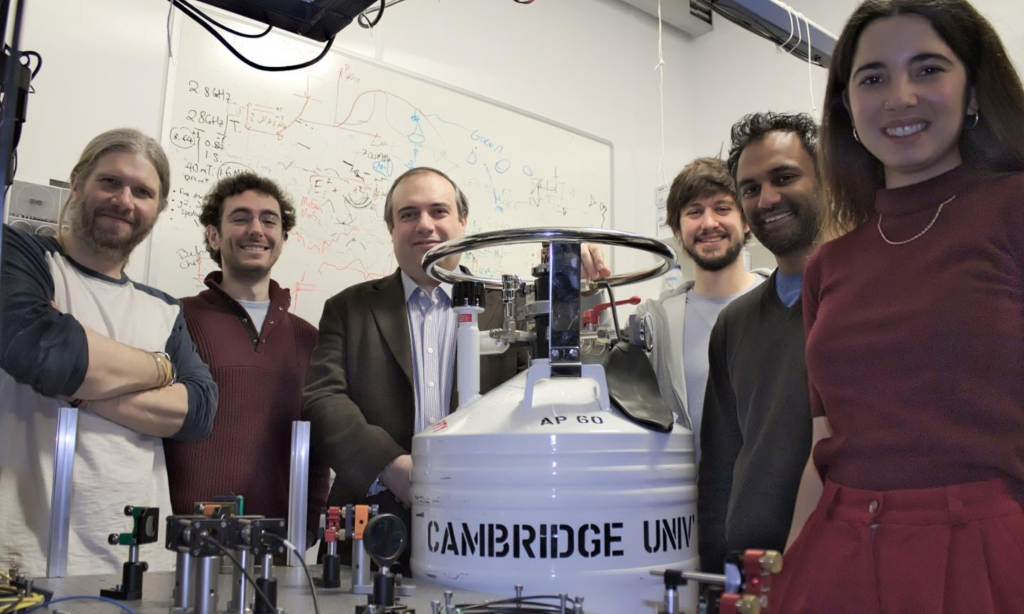
Breakthroughs in Nanophotonic Chip Technology
In a groundbreaking cover-story paper recently published in the prestigious journal Science, researcher Qiushi Guo has unveiled a revolutionary approach to high-performance ultrafast lasers. The focus of this pioneering work is the miniaturization of mode-lock lasers, a unique category of lasers emitting ultrashort, coherent light pulses at femtosecond intervals, an astonishing quadrillionth of a second.
The Significance of Ultrafast Mode-Locked Lasers
Ultrafast mode-locked lasers play a pivotal role in unraveling the mysteries of the fastest timescales in nature. They enable the observation of molecular bonds forming or breaking during chemical reactions and the study of light propagation in turbulent mediums. The high-speed, pulse-peak intensity, and broad-spectrum coverage of these lasers have catalyzed advancements in photonics technologies, ranging from optical atomic clocks to biological imaging and light-based data processing in computers.
However, the current state-of-the-art mode-locked lasers are cumbersome, expensive tabletop systems confined to laboratory settings, limiting their practical applications.
A Vision for the Future: Chip-Sized Ultrafast Lasers
“Our goal is to revolutionize the field of ultrafast photonics by transforming large lab-based systems into chip-sized ones that can be mass-produced and field-deployed,” states Guo, a faculty member at the CUNY Advance Science Research Center‘s Photonics Initiative. The objective extends beyond size reduction; the aim is to ensure that these chip-sized lasers deliver high performance, with a focus on achieving pulse-peak intensity exceeding 1 Watt, crucial for meaningful chip-scale systems.
Leveraging Thin-Film Lithium Niobate (TFLN) for Laser Miniaturization
Guo’s research employs an emerging material platform, thin-film lithium niobate (TFLN), enabling efficient shaping and precise control of laser pulses through an external radio frequency electrical signal. The team combines the high laser gain of III-V semiconductors with the efficient pulse shaping capability of TFLN nanoscale photonic waveguides. The result is a mode-locked laser capable of emitting an impressive high output peak power of 0.5 Watt, all within a compact chip-sized device.
Key Advantages of the Demonstrated Mode-Locked Laser
- Compact Size: The chip-sized laser offers a significant reduction in size compared to conventional tabletop systems.
- Wide Frequency Range: The laser’s unique properties allow precise tuning of repetition frequencies over a wide range of 200 MHz.
- Reconfigurability: The demonstrated laser exhibits strong reconfigurability, a feature crucial for enabling chip-scale, frequency-stabilized comb sources, vital for precision sensing applications.
Overcoming Challenges: Towards Scalable, Integrated, Ultrafast Photonic Systems
While the current demonstration marks a significant milestone, Guo’s team acknowledges the need to address additional challenges for realizing scalable, integrated, ultrafast photonic systems suitable for portable and handheld devices.
“This achievement paves the way for using cell phones to diagnose eye diseases or analyzing food and environments for things like E. coli and dangerous viruses,” affirms Guo. The potential applications extend to futuristic chip-scale atomic clocks, enabling navigation in scenarios where GPS is compromised or unavailable.
In conclusion, Qiushi Guo’s research not only propels the field of ultrafast photonics forward but also opens doors to transformative applications with far-reaching implications. The combination of nanophotonic chip technology and the innovative use of materials like thin-film lithium niobate marks a paradigm shift in the development of ultrafast lasers, bringing us closer to a future where powerful photonics tools are not confined to laboratories but fit seamlessly into our daily lives.


